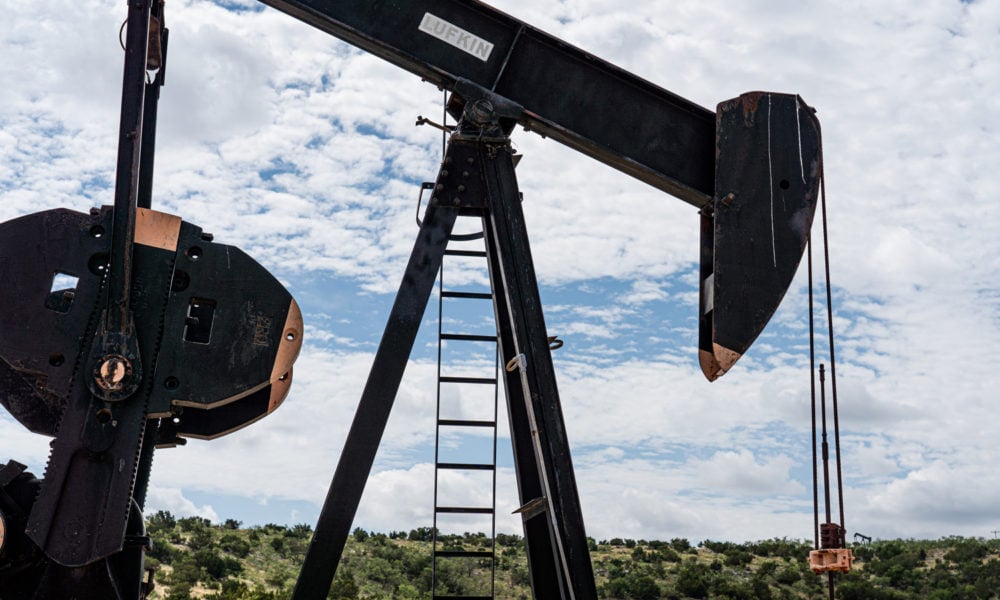Today, the EPA is finalizing rollbacks to methane standards governing oil and gas operations, dealing a major blow to climate, public health, and—oh, what’s that?—the fossil fuel lobby’s favored theory of change.
Because to hear oil and gas companies tell it, the only way to successfully fight climate change is by first strengthening our commitment to fossil fuels. Specifically, coincidentally, their fossil fuels.
A central pillar of this audacious assertion is the notion of the “natural gas bridge.” A theory which reality has long since dispatched of, with renewables plummeting in cost and racing onto the system at higher and higher penetrations, all while the grid stays steady as can be.
But fossil fuel proponents still invoke it, justifying gas-gobbling investments by claiming the energy transition’s need for sky-high buildouts of “clean” natural gas plants—indeed, enough natural gas plants, if you follow the thread far enough, to power the whole of the grid. Enough natural gas plants to keep their product in demand.
The premise is error-pocked every way you turn, so much so that it’s starting to seem easier to see the space between than anything of substance that still stands. Still, if there’s one best place to kick the struts and see the premise of that clean gas bridge give out, it’s this: set aside the polluting smokestack—fossil fuel extraction and transmission spew eye-popping levels of pollutants themselves, often ignored in the ledger yet an ongoing calamity for climate and public health.
There is no bridge that can stand on a flawed foundation like that—but that doesn’t seem to matter to the Trump EPA, which is today finalizing rules that weaken and remove exactly those pollution-limiting requirements for oil and gas operations.
The infuriating thing is, this pollution is entirely avoidable, a problem so easily fixed. Not least of which because that pollution includes leakage of oil and gas companies’ own product. Forget health, forget climate: oil and gas companies would often profit from stopping these leaks. It would just take a modicum of effort first.
But for those benefiting handsomely from the status quo, effort—as today’s rollbacks confirm—is apparently too much to ask.
What a bridge to sell; what a bridge to buy.
Understanding EPA’s methane rollbacks
The EPA’s methane rollbacks are multi-faceted in approach, broad-based in their fall-out, and singular in their purpose: prioritizing the asks of a select polluting few.
In 2016, reckoning with the surge in US oil and gas production and the associated buildout of pipelines and supporting infrastructure, the Obama EPA took a significant step towards bringing accountability to these activities by requiring new and modified oil and gas operations to prevent, monitor, and repair pollution leaks. These requirements were basic, commonsense interventions to limit the escape of methane—a potent climate change contributor more than 80 times more powerful than carbon dioxide in its first 20 years after release, now identified to be at its highest atmospheric level on record, and with recent increases in the US predominantly attributed to fossil fuels. The 2016 intervention, therefore, was a critically important step in addressing the clear and urgent methane problem. What’s more, those actions also set the stage for regulating existing oil and gas operations down the road.
But despite the urgent need, and the incredible environmental and health benefits the rule enabled, industry lobbying groups howled. And when the Trump administration took office, this rule and other associated efforts to control pollution from oil and gas operations were at the top of the rollback list.
Today’s actions are the culmination of that effort, offered in two parts:
- Limiting requirements for frequency of leakage monitoring and repairs; and
- Rescinding direct regulation of methane and excluding coverage of some sources.
Critically, the latter decision to treat methane as a byproduct of controlling volatile organic compounds (VOCs), as opposed to regulating directly, has consequences that ripple well beyond this rule. Because of the structure of the Clean Air Act, with this rescission the EPA has now precluded action on future requirements for limiting methane emissions for existing sources, too. Worst of all, under the direction of Administrator Wheeler, the EPA is apparently also using this opportunity to attempt to make any future regulation of polluting sources harder to achieve, with a particular eye to greenhouse gases.
Industry response, in context
In truth, these rollbacks are exceedingly embarrassing for an industry attempting to make the case for their products to serve as “responsible” and “clean” energy resources long into the future. Indeed, even for those with the temerity to push the preposterous theory of change of needing to be fossil-fueled to be fossil free, these rollbacks don’t pass the laugh test.
The effort required to control leaks from oil and gas operations is so low, the business case for controlling these leaks is so strong, and the environmental and health consequences of not limiting these leaks are so high, that the very notion of these regulations needing to be rolled back smacks of an industry incapable of doing the absolute minimal least.
And that helps explain oil and gas majors’ recent frantic attempts to distance themselves from these rollbacks, with even those world-class polluters seeing this Trump EPA action as too obscenely lenient, threatening to render their claims of oil and gas as necessary tools for the climate fight as a bridge too far.
But remember, it’s oil and gas lobbying that got these rollbacks, and oil and gas lobbying that’s been working to keep any future strengthening of standards at bay.
Which means with this bridge, as ever, it’s key to mind the gaps.

